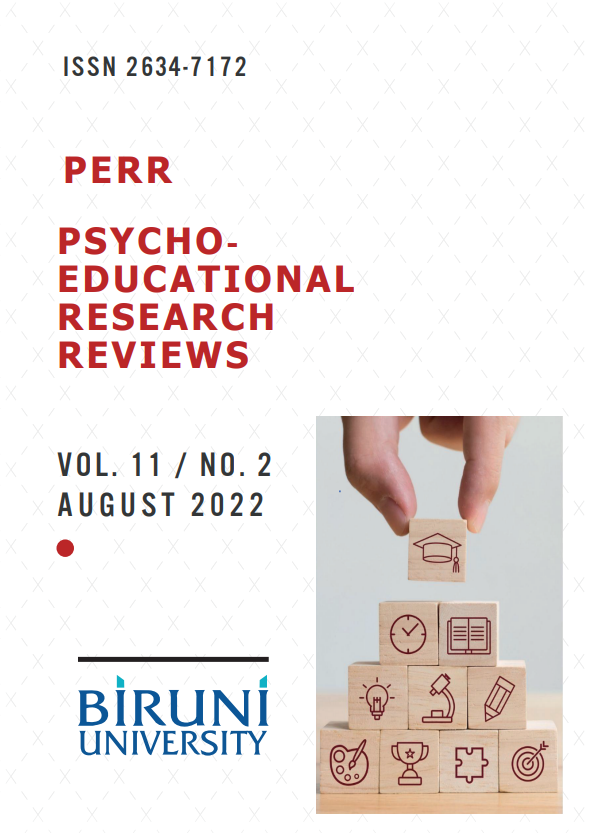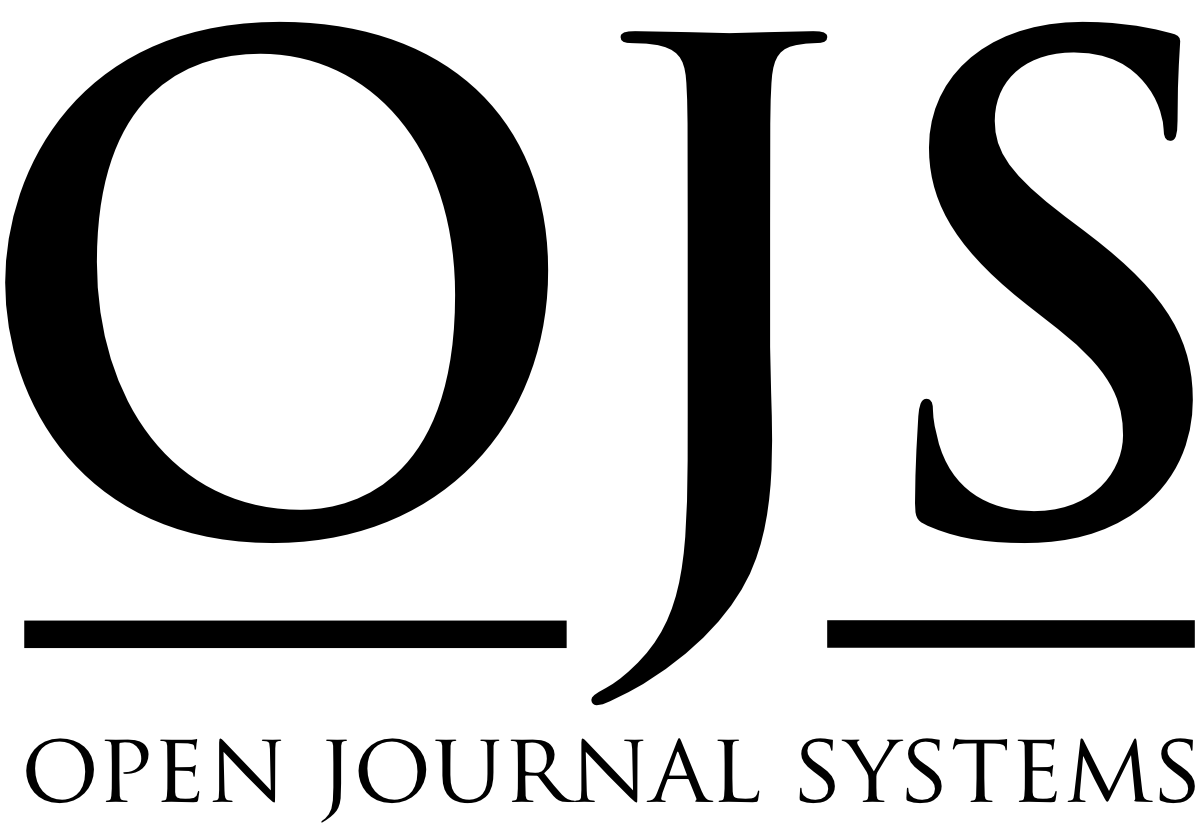In Maintaining a Marriage, Examination of the Relationship Between Mutual Happiness Levels, and Adult Attachment Styles and Psychological Resilience Levels
DOI:
https://doi.org/10.52963/PERR_Biruni_V11.N2.01Keywords:
Marriage, Divorce, Mutual Happiness, Adult Attachment Styles, Psychological ResilienceAbstract
In this study, it was aimed to determine whether the relationship between mutual happiness levels and adult attachment styles and psychological resilience levels in maintaining a marriage differed significantly at the p<.05 level by examining in terms of gender and marital status. Based on the relational survey model, the sample of the study conducted in December 2020 consists of 405 people, 51 of whom are divorced, who participated in the Google Form Research Questionnaire invitation, which was published in order to reach the married and divorced adults in the researcher's communication pool. The data of the inventories filled in the Google form were transferred to the SPSS 26.0 program to be used in the process of finding answers to the problems of the study via Excel database. As a result of the study, fallowing findings were reached. Mutual Happiness Levels of married and divorced adults did not differ significantly by gender. Mutual Happiness Levels of women and men did not differ significantly according to marital status. The sub-dimensions of Adult Attachment Style, Avoidant Attachment and Anxious/Ambivalent Attachment, of married and divorced adults did not differ significantly by gender, while Secure Attachment differed significantly. It was seen that the sub-dimensions of Adult Attachment Style of women and men, Avoidant Attachment, Anxious/Ambivalent Attachment and Secure Attachment, differed significantly according to marital status. Married and divorced adults did not differ significantly by gender in the Self-Perception, Structured Style, Social Competence and Social Resources sub-dimensions of Psychological Resilience for Adults, but significantly differed in the Planned Future and Family Cohesion sub-dimensions. Women and men did not differ significantly according to marital status in the Self-Perception, Planned Future, Structured Style and Social Resources sub-dimensions of Psychological Resilience for Adults, but significantly differed in the Social Competence and Family Cohesion sub-dimensions. The findings were discussed in the light of the literature and interpreted.
Downloads
References
Acitelli, L. K., Rogers, S., & Knee, C. R. (1999). The role of identity in the link between relationship thinking and relationship satisfaction. Journal of Social and Personal Relationships, 16(5), 591-618. https://doi.org/10.1177/0265407599165003
Amato, P. R. (2000). The consequences of divorce for adults and children. Journal of Marriage and the Family, 62(4), 1269-1287. https://doi.org/10.1111/j.1741-3737.2000.01269.x
Amato, P. R. (2010). Research on divorce: Continuing trends and new developments. Journal of Marriage and Family, 7(3), 650-666. https://doi.org/10.1111/j.1741-3737.2010.00723.x
Barber, B. L. & Eccles, J. S. (1992). Long-term influence of divorce and single parenting on adolescent family-and work-related values, behaviors, and aspirations. Psychological Bulletin, 111(1), 108-126. https://doi.org/10.1037/0033-2909.111.1.108
Basım, H. N. & Çetin, F. (2011). Yetişkinler için Psikolojik Dayanıklılık Ölçeği’nin güvenilirlik ve geçerlilik çalışması. Türk Psikiyatri Dergisi, 22(2), 104-114.
Baumeister, R. F. & Leary, M. R. (1995). The need to belong: Desire for interpersonal attachments as a fundamental human motivation. Psychological Bulletin, 117(3), 497-529. https://doi.org/10.1037/0033-2909.117.3.497
Benard, B. (2004). Resiliency: What We Have Learned, San Francisco, CA: WestEd http://www.jstor.org/stable/10.7721/chilyoutenvi.15.1.0432
Bradbury, T. N. & Karney, B. R. (2004). Understanding and altering the longitudinal course of marriage. Journal of Marriage and Family, 66(4), 862-879. https://doi.org/10.1111/j.0022-2445.2004.00059.x
Burger, J. M. (2006). Kişilik (çev. İnan Deniz Erguvan Sarıoğlu). İstanbul: Kaknüs Yayınları,
Buss, D. M. (2000). The evolution of happiness. American Psychologist, 55(1), 15-23. https://doi.org/10.1037/0003-066X.55.1.15
Carr, A. (2006). Family therapy: Concepts process and practice (Second Edition). Chichester: Wiley,
Conger, R. D., Conger, K. J. & Martin, M. J. (2010). Socioeconomic status, family processes, and ındividual development. Journal of Marriage and Family, 72(3), 685-704. https://doi.org/10.1111/j.1741-3737.2010.00725.x
Cutrona, C. E. (1996). Social support in couples, Thousand Oaks, California, CA: Sage
Dağ, İ. (1991). Belirti Tarama Listesi (Scl-90-R)’nin üniversite öğrencileri için güvenilirliği ve geçerliği. Türk Psikiyatri Dergisi, 2(1), 5-12.
Diener, M. L. & Diener McGavran, M. B. (2008). What makes people happy?: A developmental approach to the literature on family relationships and well-Being. In M. Eid & R. J. Larsen (Eds.), The Science of Subjective Well-Being (pp. 347-375). New York: Guillford Press.
Ekşi, H., Demirci, İ. & Ses, F. (2017). Psychometric features of the ınterdependent happiness Scale (IHS). XIV. European Conference on Social and Behavioral Sciences, Odessa, Ukraine.
Feeney, J. A., Noller, P. & Roberts, N. (2000). Attachment and close relationships. In C. Hendrick & S. S. Hendrick (Eds.), Close relationships: A source-book (pp. 185-201). Thousand Oaks, CA: Sage
Feeney, J. A. (2002). Attachment, Marital Interaction, and Relationship Satisfaction: A Diary Study. Personal Relationships, 9(1), 39-55. https://doi.org/10.1111/1475-6811.00003
Feeney, J. A. (2008). Adult Romantic Attachment: Developments in the Study of Couple Relationships. In J. Cassidy and P. R. Shaver (Eds.), Handbook of Attachment: Theory, Research, and Clinical Applications (Second Edition) (pp. 456-481). New York: Guillford Press.
Fincham, F. D. & Beach, S. R. H. (2010). Marriage in the new millenium: A decade in review. Journal of Marriage and Family, 72(3), 630-649. https://doi.org/10.1111/j.1741-3737.2010.00722.x
Fine, M. A. & Harvey, J. H. (2006). Handbook of Divorce and Relationship Dissolution, Mahwah, NJ: Lawrence Erlbaum Associates, Inc,.
Friborg, O., Barlaug, D., Martinussen, M., Rosenvinge, J. H. & Hjemdal, O. (2005). Resilience in relation to personality and intelligence. International Journal of Methods in Psychiatric Research, 14(1), 29-42. https://doi.org/10.1002/mpr.15
Friborg, O., Hjemdal, O., Rosenvinge, J. H. & Martinussen, M. (2006). A new rating scale for adult resilience: what are the central protective resources behind healthy adjustment? International Journal of Methods in Psychiatric Research, 12(2), 65-76. https://doi.org/10.1002/mpr.143
Fowler, J. H. & Christakis, N. A. (2008). Dynamic spread of happiness in a large social network: Longitudinal analysis over 20 years in the Framingham Heart Study. British Medical Journal, 337(a2338), 1-9. https://doi.org/10.1136/bmj.a2338
Gottman, J. M. & Notarius, C. I. (2002). Marital research in the 20th Century and a research agenda for the 21rd Century. Family Process, 41(2), 159-197. https://doi.org/10.1111/j.1545-5300.2002.41203.x
Greeff, A. P. & Malherbe, H. L. (2001). Intimacy and marital satisfaction in spouses. Journal of Sex and Marital Therapy, 27(3), 247-257. https://doi.org/10.1080/009262301750257100
Haase, J. E. (2004). The Adolescent Resilience Model as a guide to ınterventions. Journal of Pediatric Oncology Nursing, 21(5), 289-299. https://doi.org/10.1177/1043454204267922
Harvey, J. H. & Pauwels, B. G. (2009). Relationship Connection: A redux of the role of minding and the quality of feeling special in the enhancement of closeness. In S. J. Lopez & C. R. Snyder (Eds.), Oxford handbook of positive psychology (Second Edition) (pp. 385-392). New York: Oxford University Press.
Hawkins, D. N. & Booth, A. (2005). Unhappily ever after: Effects of long term, low quality marriages on well-being. Social Forces, 84(1), 451-471. https://doi.org/10.1353/sof.2005.0103
Hazan, C. & Shaver, P. (1987). Romantic love conceptualized as an attachment process. Journal of Personality and Social Psychology, 52(3), 511-524. https://doi.org/10.1037/0022-3514.52.3.511
Hendrick, C. & Hendrick, S. S. (2009). Love. In S. J. Lopez & C.R. Snyder (Eds.), Oxford handbook of positive psychology (Second Edition) (pp. 447-454). New York: Oxford University Press.
Hisli-Şahin, N., Basım, H. N. & Çetin, F. (2009). Kişilerarası çatışma çözme yaklaşımlarında kendilik algısı ve kontrol odağı. Türk Psikiyatri Dergisi, 20(2), 153-163.
Homans, G. C. (1961). Social behavior: Its elementary forms, New York: Har-court, Brace & World
Johnson, S. (2020). Bana sıkıca sarıl (p. 40). Ankara: Ck Yayınevi,
Karasar, N. (2011). Bilimsel araştırma yöntemi (11. Baskı). Ankara: Nobel Yayınevi,
Kesebir, S., Dereboy, F. & Kökçü, F. (2012). Erişkin Bağlanma biçimi ölçeği geçerlilik ve güvenilirlik çalışması. Yeni Symposium, 50(2), 99-104.
Lenoir, F. (2016). Mutluluk üstüne felsefi bir yolculuk. İstanbul: Bilge Kültür Sanat.
Lucas, R. E. & Clark, A. E. (2006). Do people really adapt to marriage. Journal of Happiness Studies, 7, 405-426. https://doi.org/10.1007/s10902-006-9001-x
Luthar, S. S. & Cicchetti, D. (2000). The construct of resilience: ımplications for ınterventions and social policies. Development and Psychopathology, 12(4), 857-885. https://doi.org/10.1017/S0954579400004156
Luthar, S. S., Cicchetti, D. & Becker, B. (2000). Research on Resilience: Response to Commentaries. Child Development, 71(3), 573-575. https://doi.org/10.1111/1467-8624.00168
Masten, A. S. (2007). Resilience in developing systems: Progress and Promise as the Fourth Wave Rises. Development and Psychopathology, 19(3), 921-930. https://doi.org/10.1017/S0954579407000442
Masten, A. S., Cutuli, J. J., Herbers, J. E. & Reed, M. G. J. (2009). Resilience in development. In C. R. Synder & S. J. Lopez (Eds), The Oxford handbook of positive psychology (pp. 117-132). New York: Oxford University Press
McCubbin, H. I. & McCubbin, M. A. (1996). Resiliency in families: A conceptual model of family adjustment and adaptation in response to stress and crises. In H. I. McCubbin, A. I. Thompson, & M. A. McCubbin (Eds.), Family assesment: resiliency, coping and adaptation-ınventories for research and practice (pp. 1-64). Madison: University of Wisconsin System
Mikulincer, M., Florian, V. & Tolmacz, R. (1990). Attachment styles and fear of personal death: A case study of affect regulation. Journal of personality and social psychology, 58(2), 273-280. https://doi.org/10.1037/0022-3514.58.2.273
Myers, D. G. (2000). The funds, friends and faith of happy people. American Psychologist, 55(1), 56-67. https://doi.org/10.1037/0003-066X.55.1.56
Neria, Y., Guttmann-Steinmetz, S., Koenen, K., Levinovsky, L., Zakin, G. & Dekel, R. (2001). Do attachment and hardiness relate to each other and to mental health in real-life stress? Journal of Social and Personal Relationships, 18(6), 844-858. https://doi.org/10.1177/0265407501186006
Newman, B. M. & Newman, P. R. (2008). Development through life (Tenth Edition). Pasific Grove, CA: Brooks/Cole,
Olsson, C. A., Bond, L., Burns, J. M., Vella-Brodrick D. A. & Sawyer, S. M. (2003). Adolescent resilience: A concept analysis. Journal of Adolescence, 26(1), 1-11. https://doi.org/10.1016/S0140-1971(02)00118-5
Öztekin, H. (2016). Mutlu insanların küçük sırları (1. Baskı). Nokta e-kitap,
Rohner, R. P. & Veneziano, R. A. (2001). The importance of father love: History and contemporary evidence. Review of General Psychology, 5(4), 382-405. https://doi.org/10.1037/1089-2680.5.4.382
Sabuncuoğlu, O. & Berkem, M. (2006). Bağlanma biçemi ve doğum sonrası depresyon belirtileri arasındaki ilişki: Türkiye’den bulgular. Türk Psikiyatri Dergisi, 17(4), 252-258.
Saygılı, S. (2015). Evlilikte Mutluluk Sanatı (17. Baskı). İstanbul: Türdav Yayın Grubu,
Siebert, Al. (2005). The resiliency adavantage: Master change, thrive under pressure, and bounce back from setbacks, San Francisco: Berrett Koehler
Singh, K. & Yu, N. X. (2010). Psychometric evaluation of the Cornor-Davidson Resilience Scale (CD-RISC) In a sample of Indian students. Journal of Psychology, 1(1), 23-30. https://doi.org/10.1080/09764224.2010.11885442
Shaver, P. R. & Mikulincer, M. (2006). A behavioural systems approach to romantic love relationships: attachment, care giving, and sex. In R. J. Sternberg & K. Weis (Eds.), The New Psychology of Love (pp. 36-64). New Haven CT: Yale University Press
Soons, J. P. M., Liefbroer, A. C. & Kalmijn, M. (2009). The long-term consequences of relationships formation for subjective well-being. Journal of Marriage and The Family, 71(5), 1254-1270. https://doi.org/10.1111/j.1741-3737.2009.00667.x
Stack, S. & Eshleman, J. R. (1998). Marital status and happiness: A 17-nation study. Journal of Marriage and the Family, 60(2), 527-536. https://doi.org/10.2307/353867
Sternberg, R. J. & Weis, K. (2006). The new psychology of love, New Haven CT: Yale University Press
Walsh, F. (2003). Family Resilience: A framework for clinical practice. Family Process, 42(1), 1-18. https://doi.org/10.1111/j.1545-5300.2003.00001.x
Wood, A. M., Linley, P. A., Maltby, J., Kashdan, T. B. & Hurling, R. (2011). Using personal and psychological strengths leads to increases in well-being over time: A longitudinal study and the development of the strengths use questinnaire. Personality and Individual Differences, 50(1), 15-19. https://doi.org/10.1016/j.paid.2010.08.004
Additional Files
Published
How to Cite
Issue
Section
License
Copyright (c) 2022 Psycho-Educational Research Reviews

This work is licensed under a Creative Commons Attribution-NonCommercial-NoDerivatives 4.0 International License.










